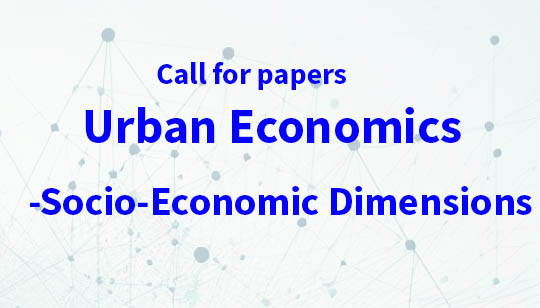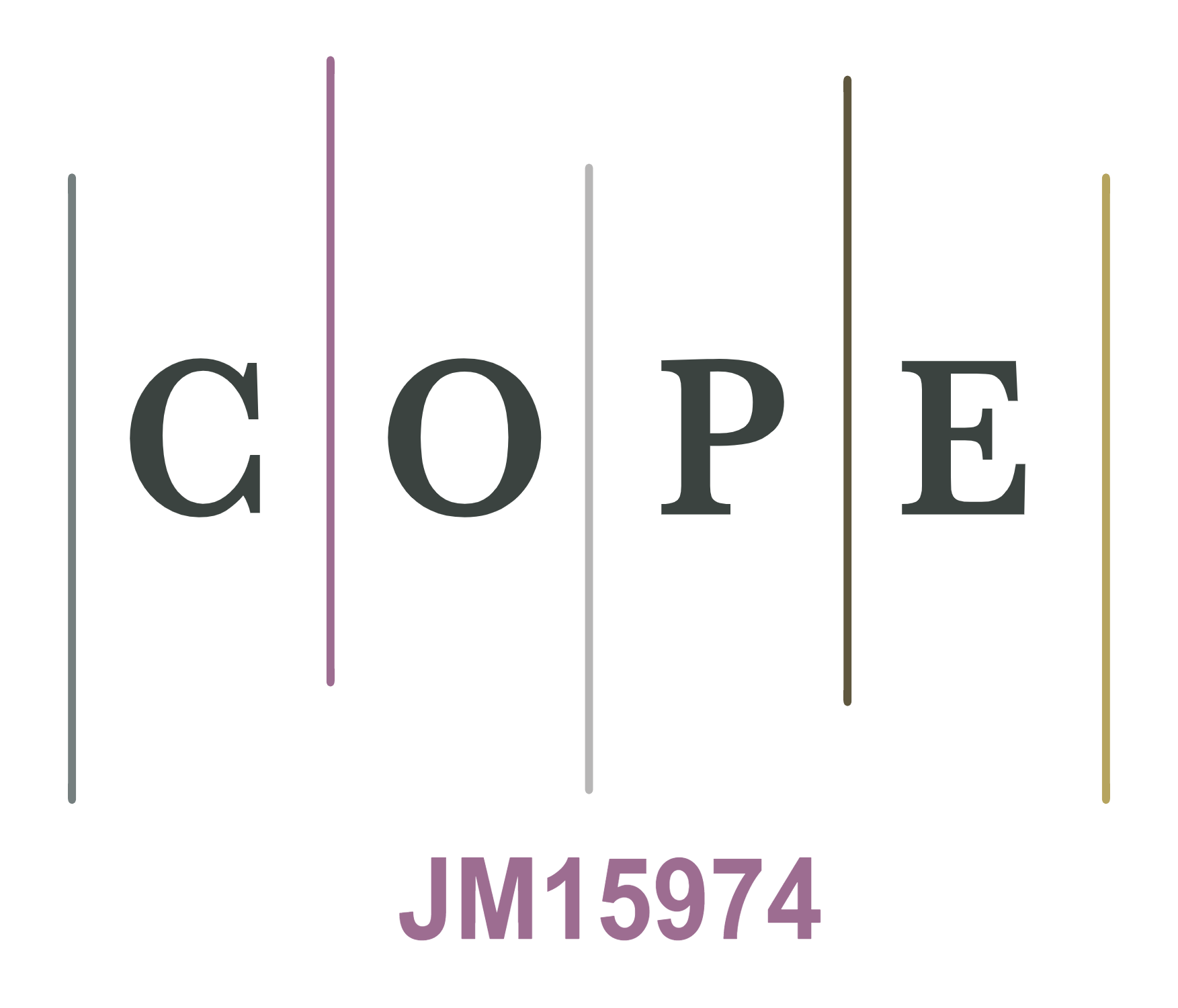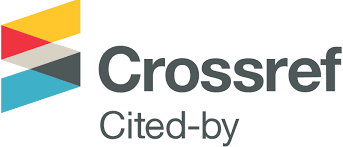Developing Design Criteria for Sustainable Urban Parks
DOI:
https://doi.org/10.25034/ijcua.2022.v6n1-7Keywords:
Sustainable Cities, Urban Parks, Green Spaces, COVID-19, Sustainable DesignAbstract
This study investigates how urban parks can contribute to helping cities become more sustainable through developing a set of criteria for the sustainable design of urban parks. Today, there is no example around the world where all the proposed sustainable design criteria are applied together in a specific urban park. In this context, this study aims to make a novel contribution by systematically reviewing the literature on the sustainable design of urban parks. In the light of research findings, this study contributes to the implementation of a comprehensive sustainable park design practice in our cities in the future. These design criteria may further serve as performance indicators to offer information and know-how to local authorities, practitioners, communities, and other actors in this field to help them assess their success levels and progress over time.
Downloads
References
Akbar, M., Mustafa Kamal, M. S., Mariapan, M., Maulan, S., & Sheybani, M. (2010). The role of urban green spaces in mood change. Australian Journal of Basic and Applied Sciences, 4(10), 5352-5361.
Aram F., Solgi E., Higueras García E., Mosavi A., & R. Várkonyi-Kóczy A. (2019). The cooling effect of large-scale urban parks on surrounding area thermal comfort. Energies, 12(20), 3904. https://doi.org/10.3390/en12203904
Arnberger, A., & Eder, R. (2012). The influence of green space on community attachment of urban and suburban residents. Urban Forestry & Urban Greening. 11(1), 41-49. https://doi.org/10.1016/j.ufug.2011.11.003
Baker S., & Eckerberg K. (Ed.) (2008). In pursuit of sustainable development: new governance practices at the sub-national level in Europe. Routledge: London. https://doi.org/10.4324/9780203928165
Bark, R. H., Osgood, D. E., Colby, B. G., & Halper, E. B. (2011). How do homebuyers value different types of green space? Journal of Agricultural and Resource Economics, 36(2), 395-415. Retrieved April 9, 2021, from https://www.jstor.org/stable/23243088
Baycan-Levent, T., van Leeuwen, E., Rodenburg, C., & Nijkamp, P. (2003). Development and management of green spaces in European cities: a comparative analysis. In E. Beriatos & J. Colman (Eds.), The Pulsar Effect in Urban Planning (pp. 237-247). Volos, Greece: ISOCARP Congress Publications and University of Thessaly Press.
Birch J., Rishbeth C., & Payne S. R. (2020). Nature doesn't judge you - how urban nature supports young people's mental health and wellbeing in a diverse UK city. Health & Place, 62, 102296. https://doi.org/10.1016/j.healthplace.2020.102296
Bishop, J. (2017). Building sustainable cities of the future. Springer, Cham. https://doi.org/10.1007/978-3-319-54458-8
Blanco, H., & Mazmanian, D. A. (Ed.) (2015). Elgar companion to sustainable cities: strategies, methods and outlook. UK: Edward Elgar. https://doi.org/10.4337/9780857939999
Brown, C., & Grant, M. (2005). Biodiversity and human health: what role for nature in healthy urban planning? Built Environment, 31(4), 326-338. https://doi.org/10.2148/benv.2005.31.4.326
Brown, R. D., Vanos, J., Kenny, N., & Lenzholzer, S. (2015). Designing urban parks that ameliorate the effects of climate change. Landscape and Urban Planning, 138, 118-131. https://doi.org/10.1016/j.landurbplan.2015.02.006
Carbó-Ramírez, P., & Zuria, I., (2011). The value of small urban greenspaces for birds in a Mexican city. Landscape and Urban Planning, 100(3), 213-222. https://doi.org/10.1016/j.landurbplan.2010.12.008
Chiesura, A. (2004). The role of parks for the sustainable city. Landscape and Urban Planning, 68(1), 129-138. https://doi.org/10.1016/j.landurbplan.2003.08.003
Clini, C., Musu, I., & Gullino, M. L. (Ed.) (2008). Sustainable development and environmental management experiences and case studies, Springer, Dordrecht, the Netherlands. https://doi.org/10.1007/978-1-4020-6598-9
Cohen, D. A., Mckenzie, T. L., Sehgal, A., Williamson, S., Golinelli, D., & Lurie, N. (2007). Contribution of public parks to physical activity. American Journal of Public Health, 97(3), 509-514. https://doi.org/10.2105/AJPH.2005.072447
Cohen, S. (2018). The sustainable city. Columbia University Press. https://doi.org/10.7312/cohe18204
Dalby, S., Horton, S., Mahon, R. and Thomaz, D. (Ed.) (2019). Achieving the sustainable development goals global governance challenges. Routledge, London. https://doi.org/10.4324/9780429029622
Derks J., Giessen L., & Winkel G. (2020). COVID-19-induced visitor boom reveals the importance of forests as critical infrastructure. Forest Policy and Economics, 118, 102253. https://doi.org/10.1016/j.forpol.2020.102253
Dizdaroglu, D. (2017). The Role of Indicator-Based Sustainability Assessment in Policy and the Decision-Making Process: A Review and Outlook, Sustainability, 9(6), 1018. https://doi.org/10.3390/su9061018
Filazzola, A., Shrestha, N., MacIvor, J. S., & Stanley, M. (2019). The contribution of constructed green infrastructure to urban biodiversity: a synthesis and meta-analysis. Journal of Applied Ecology, 56(9), 2131-2143. https://doi.org/10.1111/1365-2664.13475
Gardner, G., Prugh, T., & Renner, M. (Ed.) (2016). Can a city be sustainable? state of the world. Washington: Worldwatch Institute.
Geng, D., Innes, J., Wu, W., & Wang, G. (2021). Impacts of COVID-19 pandemic on urban park visitation: a global analysis. Journal of Forestry Research, 32 (2), 553-567. https://doi.org/10.1007/s11676-020-01249-w
Girardet, H. (2004). Cities people planet: liveable cities for a sustainable world. Academy Press. https://doi.org/10.1093/oso/9780199264520.003.0011
Grima N., Corcoran W., Hill-James C., Langton B., Sommer H., & Fisher B. (2020). The importance of urban natural areas and urban ecosystem services during the COVID-19 pandemic. PLOS ONE, 15(12), e0243344. https://doi.org/10.1371/journal.pone.0243344
Hawken, P. (1993). The ecology of commerce: how business can save the planet. Weidenfeld and Nicolson.
Heo, S., Desai, M.U., Lowe, S.R., & Bell, M.L. (2021). Impact of Changed Use of Greenspace during COVID-19 Pandemic on Depression and Anxiety. International Journal of Environmental Research and Public Health, 18, 5842. https://doi.org/10.3390/ijerph18115842
Hermy, M. (2011). Landscaped parks and open spaces. In I. Douglas, D. Goode, M. Houck, R. Wang (Eds.), The Routledge Handbook of Urban Ecology (pp. 289-300). Routledge, London. https://doi.org/10.4324/9780203839263
Hockings M., Dudley N., Elliott W., Ferreira M. N., Mackinnon K., Pasha M. K. S. et al. (2020). Editorial essay: Covid-19 and protected and conserved areas. Parks 26(1), 7-24. https://doi.org/10.2305/IUCN.CH.2020.PARKS-26-1MH.en
Hoshino, T., & Kuriyama, K. (2010). Measuring the benefits of neighbourhood park amenities: Application and comparison of spatial hedonic approaches. Environmental & Resource Economics, 45, 429-444. https://doi.org/10.1007/s10640-009-9321-5
ICLEI Local Governments for Sustainability (2021). Sustainable city. Retrieved April 9, 2021, from https://e-lib.iclei.org/wp-content/uploads/2016/10/ICLEI-Brochure_Sept-2016_Final.pdf
Idowu, S. O., Schmidpeter, R., & Zu, L. (Ed.) (2020). The future of the UN sustainable development goals: business perspectives for global development in 2030. Springer. https://doi.org/10.1007/978-3-030-21154-7
Jenks, M., & Dempsey, N. (Ed.) (2005). Future forms and design for sustainable cities. Routledge, London. https://doi.org/10.4324/9780080455525
Kaplan, R. (2001). The nature of the view from home: psychological benefits. Environment and Behavior, 33(4), 507-542. https://doi.org/10.1177/00139160121973115
Ksiazek, K., Tonietto, R., & Ascher, J. S. (2014). Ten bee species new to green roofs in the Chicago area. The Great Lakes Entomologist, 47(1), 87-92. Retrieved April 9, 2021, from https://scholar.valpo.edu/tgle/vol47/iss1/13
Lee, A. C. K., & Maheswaran, R., (2011). The health benefits of urban green spaces: a review of the evidence. Journal of Public Health, 33(2), 212-222. https://doi.org/10.1093/pubmed/fdq068
Maas, J., van Dillen, S. M. E., Verheij, R. A., Groenewegen, P. P. (2009). Social contacts as a possible mechanism behind the relation between green space and health. Health & Place, 15(2), 586-595. https://doi.org/10.1016/j.healthplace.2008.09.006
Moulay A., Ujang N., & Said I. (2017). Legibility of neighborhood parks as a predicator for enhanced social interaction towards social sustainability. Cities, 61, 58-64. https://doi.org/10.1016/j.cities.2016.11.007
Newman P., & Jennings, I. (2008). Cities as sustainable ecosystems: principles and practices. Island Press, Washington DC.
Newman, P. W. G. (1999). Sustainability and cities: extending the metabolism model. Landscape and Urban Planning, 44(4), 219-226. https://doi.org/10.1016/S0169-2046(99)00009-2
Öckinger, E., Dannestam, A., & Smith, H. G., (2009). The importance of fragmentation and habitat quality of urban grasslands for butterfly diversity. Landscape and Urban Planning, 93(1), 31-37. https://doi.org/10.1016/j.landurbplan.2009.05.021
Oishi, Y. (2012). Influence of urban green spaces on the conservation of bryophyte diversity: The special role of Japanese gardens. Landscape and Urban Planning, 106(1), 6-11. https://doi.org/10.1016/j.landurbplan.2011.12.001
Parris, K. M., Amati, M., Bekessy, S. A., Dagenais, D., Fryd, O., Hahs, A. K., … Williams, N. S. G. (2018). The seven lamps of planning for biodiversity in the city. Cities, 83, 44-53. https://doi.org/10.1016/j.cities.2018.06.007
Pauleit, S., Ennos, R., & Golding, Y. (2005). Modeling the environmental impacts of urban land use and land cover change – a study in Merseyside, UK. Landscape and Urban Planning, 71(2-4), 295-310. https://doi.org/10.1016/j.landurbplan.2004.03.009
Peters, K., Elands, B., & Buijs, A. (2010). Social interactions in urban parks: stimulating social cohesion?. Urban Forestry & Urban Greening, 9(2), 93-100. https://doi.org/10.1016/j.ufug.2009.11.003
Rice W. L., & Pan B. (2020). Understanding drivers of change in park visitation during the COVID-19 pandemic: a spatial application of big data. SocArXiv. https://doi.org/10.31235/osf.io/97qa4
Roosa, S. A. (2010). Sustainable development handbook. The Fairmont Press, Inc.
Sachs, J. D. (2015). The age of sustainable development. New York, NY: Columbia University Press. https://doi.org/10.7312/sach17314
Sachs, J., Schmidt-Traub, G., Kroll, C., Lafortune, G., Fuller, G., & Woelm, F. (2020). The sustainable development goals and covıd-19: sustainable development report 2020. Cambridge: Cambridge University Press. https://doi.org/10.1017/9781108992411
Samuelsson K., Barthel S., Colding J., Macassa G., & Giusti M. (2020). Urban nature as a source of resilience during social distancing amidst the coronavirus pandemic. OSF Preprints 3wx5a, Center for Open Science. https://doi.org/10.31219/osf.io/3wx5a
Sandifer P. A., Sutton-Grier A. E., & Ward B. P. (2015). Exploring connections among nature, biodiversity, ecosystem services, and human health and well-being: opportunities to enhance health and biodiversity conservation, Ecosystem Services, 12, 1-15. https://doi.org/10.1016/j.ecoser.2014.12.007
Tonietto, R., Fant, J., Ascher, J., Ellis, K., & Larkin, D., (2011). A comparison of bee communities of Chicago green roofs, parks and prairies. Landscape and Urban Planning, 103(1), 102-108. https://doi.org/10.1016/j.landurbplan.2011.07.004
Troy, A., & Grove, J. M. (2008). Property values, parks, and crime: a hedonic analysis in Baltimore, MD. Landscape and Urban Planning, 87(3), 233-245. https://doi.org/10.1016/j.landurbplan.2008.06.005
Turo, K. J., Spring M. R., Sivakoff, F. S., Delgado de la flor, Y. A., & Gardiner, M. M. (2021). Conservation in post-industrial cities: how does vacant land management and landscape configuration influence urban bees?. Journal of Applied Ecology, 58(1), 58-69. https://doi.org/10.1111/1365-2664.13773
Ugolini, F., Massetti, L., Calaza-Martínez, P., Cariñanos, P., Dobbs, C., Ostoic, S. K. et al. (2020). Effects of the COVID-19 pandemic on the use and perceptions of urbangreen space: an international exploratory study. Urban Forestry and Urban Greening, 56, 126888. https://doi.org/10.1016/j.ufug.2020.126888
Ukaga, O., Maser, C., & Reichenbach, M. (Ed.) (2010). Sustainable development: principles, frameworks, and case studies. Boca Raton: CRC Press. https://doi.org/10.1201/9781439820636
Varela-Candamio L., Novo-Corti I., & Garcia-Alvarez M. T. (2018). The importance of environmental education in the determinants of green behavior: A meta-analysis approach. Journal of Cleaner Production, 170, 1565-1578. https://doi.org/10.1016/j.jclepro.2017.09.214
Wang, M. H., Ho, Y. S., & Fu, H. Z. (2019). Global performance and development on sustainable city based on natural science and social science research: A bibliometric analysis. Science of the Total Environment, 666, 1245-1254, https://doi.org/10.1016/j.scitotenv.2019.02.139
Ward Thompson, C., Roe, J., Aspinall, P., Mitchell, R., Clow, A., & Miller, D. (2012). More green space is linked to less stress in deprived communities: evidence from salivary cortisol patterns. Landscape and Urban Planning, 105(3), 221-229. https://doi.org/10.1016/j.landurbplan.2011.12.015
WCED (1987). Our Common Future (The Brundtland report), World Commission on Environment and Development, New York: Oxford University Press.
Weinstein, M. P., & Turner, R. E. (Ed.) (2012). Sustainability science: the emerging paradigm and the urban environment, Springer. https://doi.org/10.1007/978-1-4614-3188-6
Wenzel A., Grass I., Belavadi V. V., Tscharntke T. (2020). How urbanization is driving pollinator diversity and pollination – a systematic review. Biological Conservation, 241, 108321. https://doi.org/10.1016/j.biocon.2019.108321
Wheeler, S. M., & Beatley, T. (Ed.) (2004). Sustainable urban development reader. Routledge. https://doi.org/10.4324/9780203501627
Wood L., Hooper P., Foster S., & Bull F. (2017). Public green spaces and positive mental health - investigating the relationship between access, quantity and types of parks and mental wellbeing. Health and Place, 48, 63-71. https://doi.org/10.1016/j.healthplace.2017.09.002
Yan, H., Wu, F., & Dong, L. (2018). Influence of a large urban park on the local urban thermal environment. The Science of the total environment, 622-623, 882-891. https://doi.org/10.1016/j.scitotenv.2017.11.327
Published
Issue
Section
License
Copyright (c) 2021 Dr. Didem Dizdaroglu

This work is licensed under a Creative Commons Attribution 4.0 International License.






















